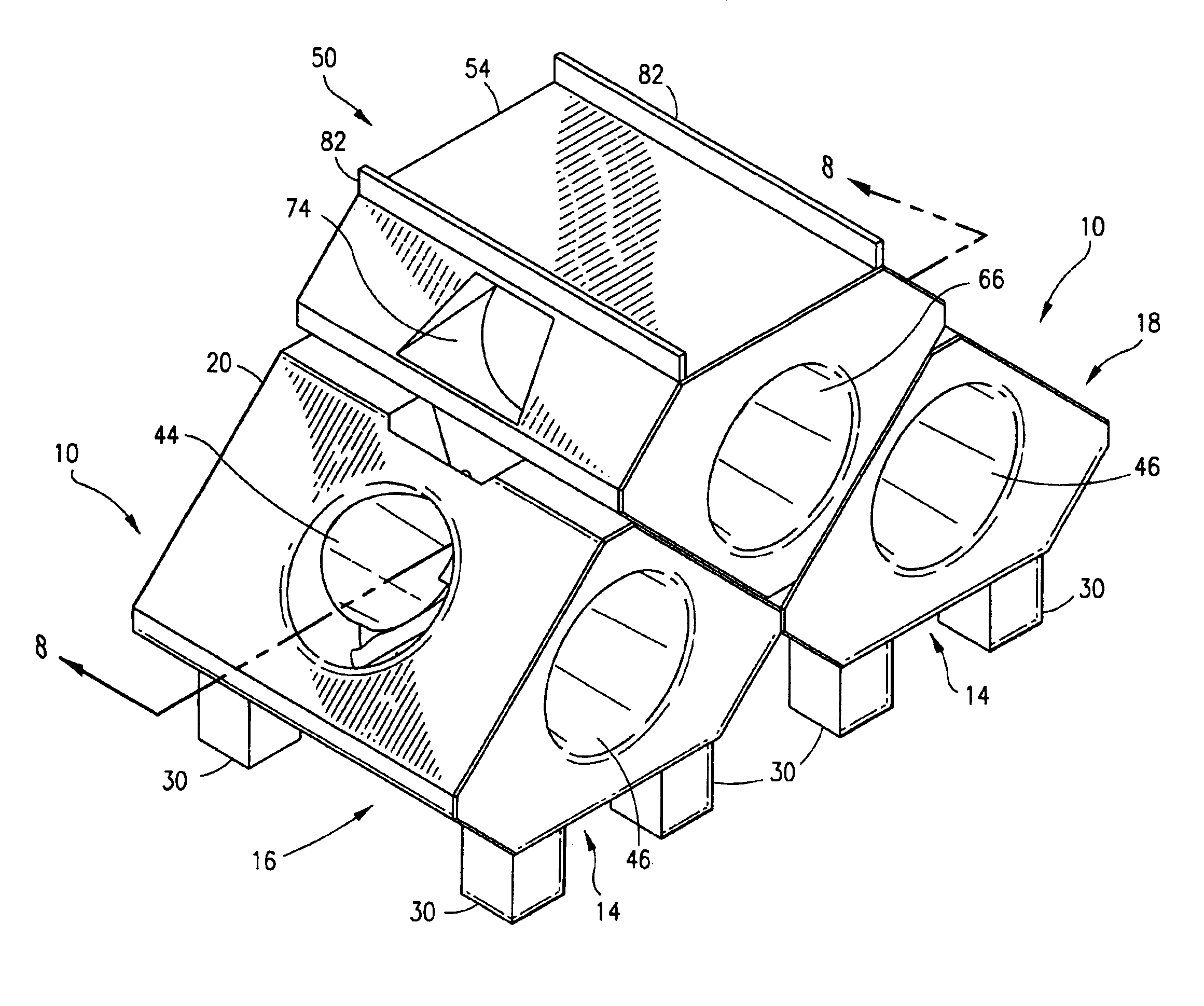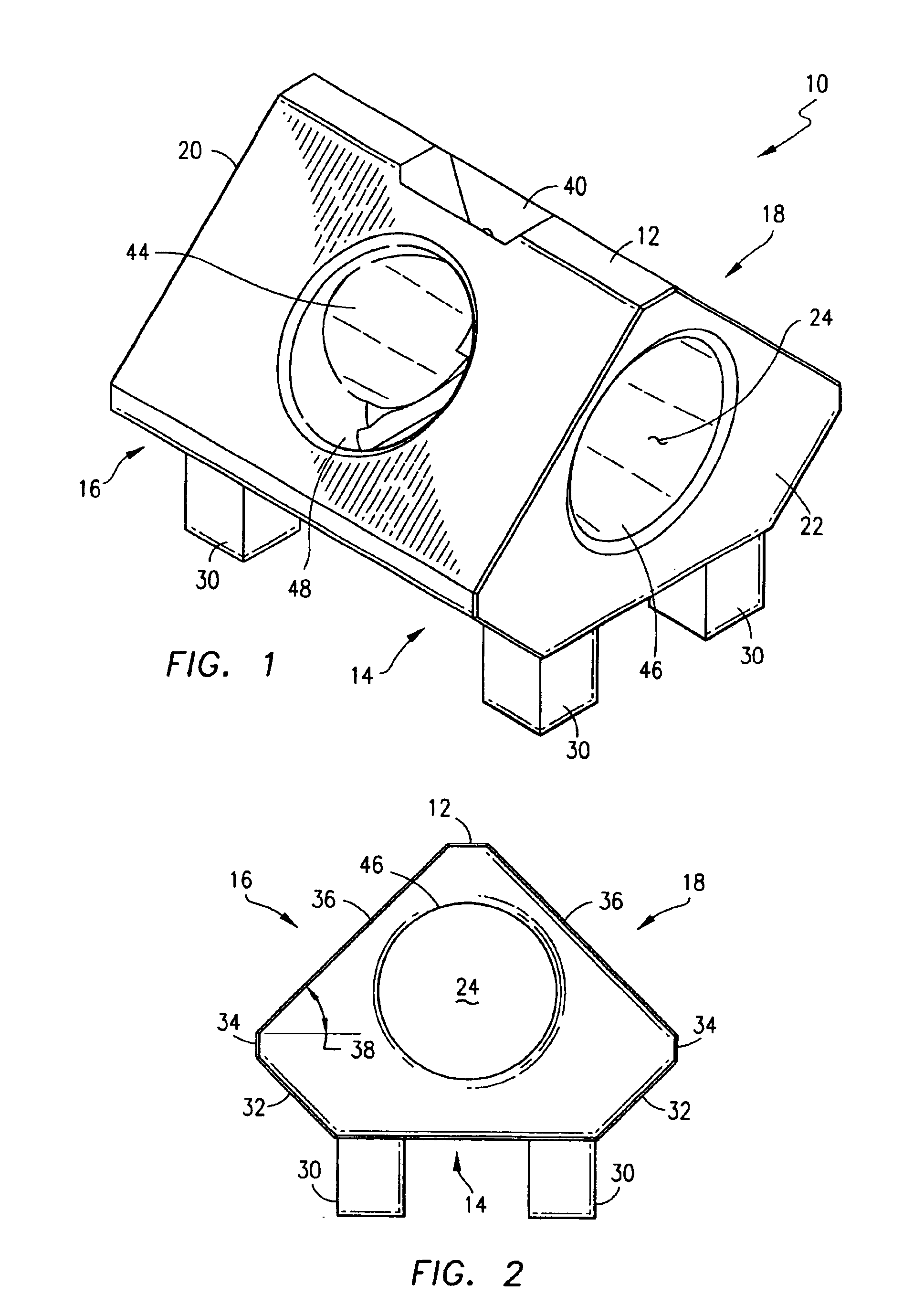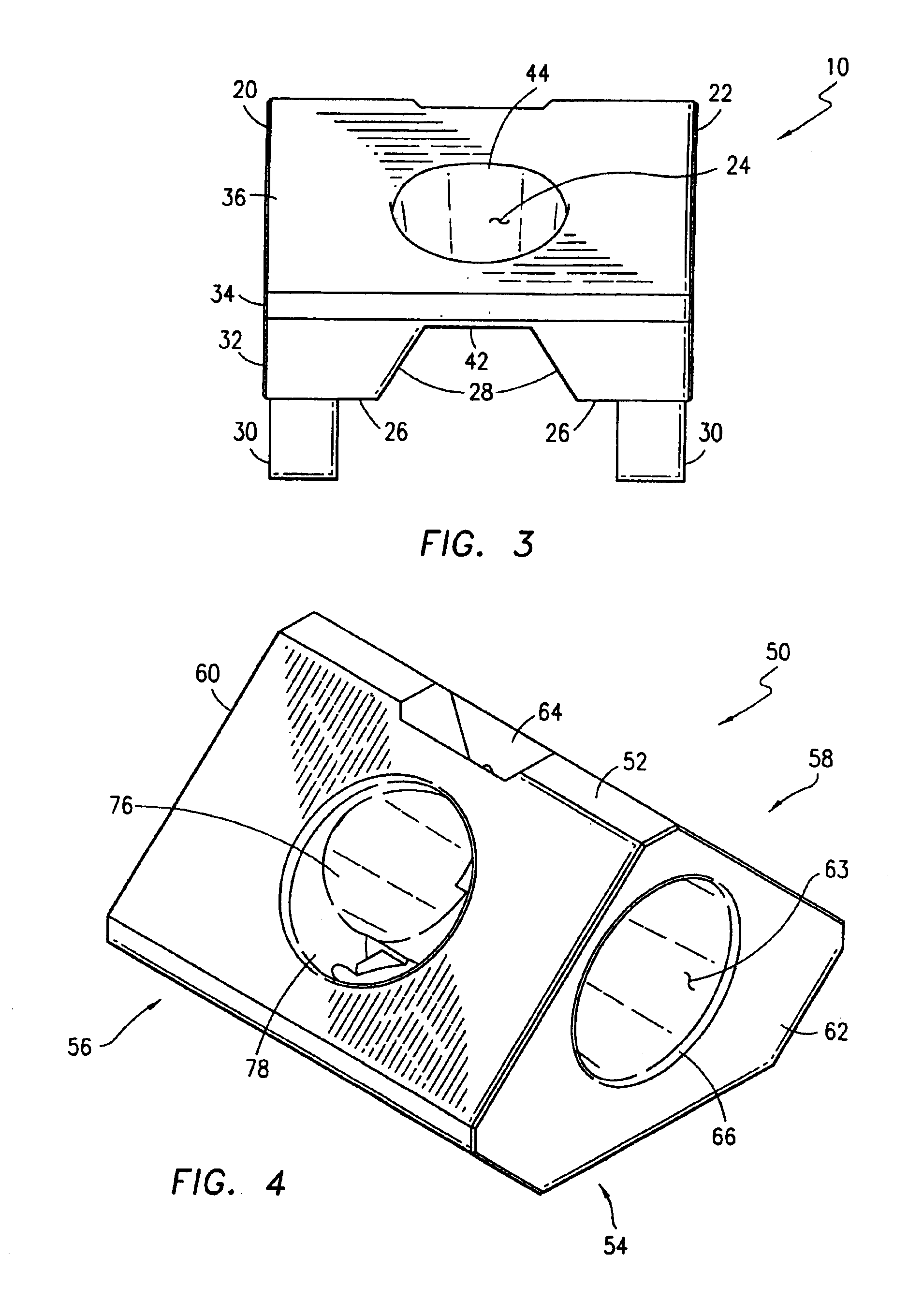Modular artificial reef, sea wall and marine habitat
a technology of modular artificial reefs and marine habitats, applied in the direction of piers, groynes, breakwaters, etc., can solve the problems of poor choice of materials, high cost, manufacturing difficulties, etc., and achieve the effect of increasing the stability of the uni
- Summary
- Abstract
- Description
- Claims
- Application Information
AI Technical Summary
Benefits of technology
Problems solved by technology
Method used
Image
Examples
Embodiment Construction
[0029]Referring initially to FIGS. 1-3, one embodiment of a modular unit 10 according to this invention is shown. The unit 10 comprises a top wall 12, a bottom wall 14, two side walls 16, 18 and two end walls 20, 22 which are interconnected to form a hollow interior 24. Each of the walls 12-22 is preferably formed of a marine concrete with no steel reinforcing bars or the like which can corrode upon exposure to salt water. The top wall 12 is substantially horizontally oriented and has a small cross-sectional area compared to the other walls of unit 10. As best seen in FIG. 3, the bottom wall 14 is formed with a generally horizontally disposed corner portion 26 at each of its four corners joined to an inwardly tapering transition portion 28. A support or leg 30 extends downwardly from each corner portion 26 of the bottom wall 14, for purposes described below. Each of the end walls 20 and 22 extends generally vertically from the bottom wall 14 and parallel to one another. As best seen...
PUM
 Login to View More
Login to View More Abstract
Description
Claims
Application Information
 Login to View More
Login to View More - R&D
- Intellectual Property
- Life Sciences
- Materials
- Tech Scout
- Unparalleled Data Quality
- Higher Quality Content
- 60% Fewer Hallucinations
Browse by: Latest US Patents, China's latest patents, Technical Efficacy Thesaurus, Application Domain, Technology Topic, Popular Technical Reports.
© 2025 PatSnap. All rights reserved.Legal|Privacy policy|Modern Slavery Act Transparency Statement|Sitemap|About US| Contact US: help@patsnap.com



